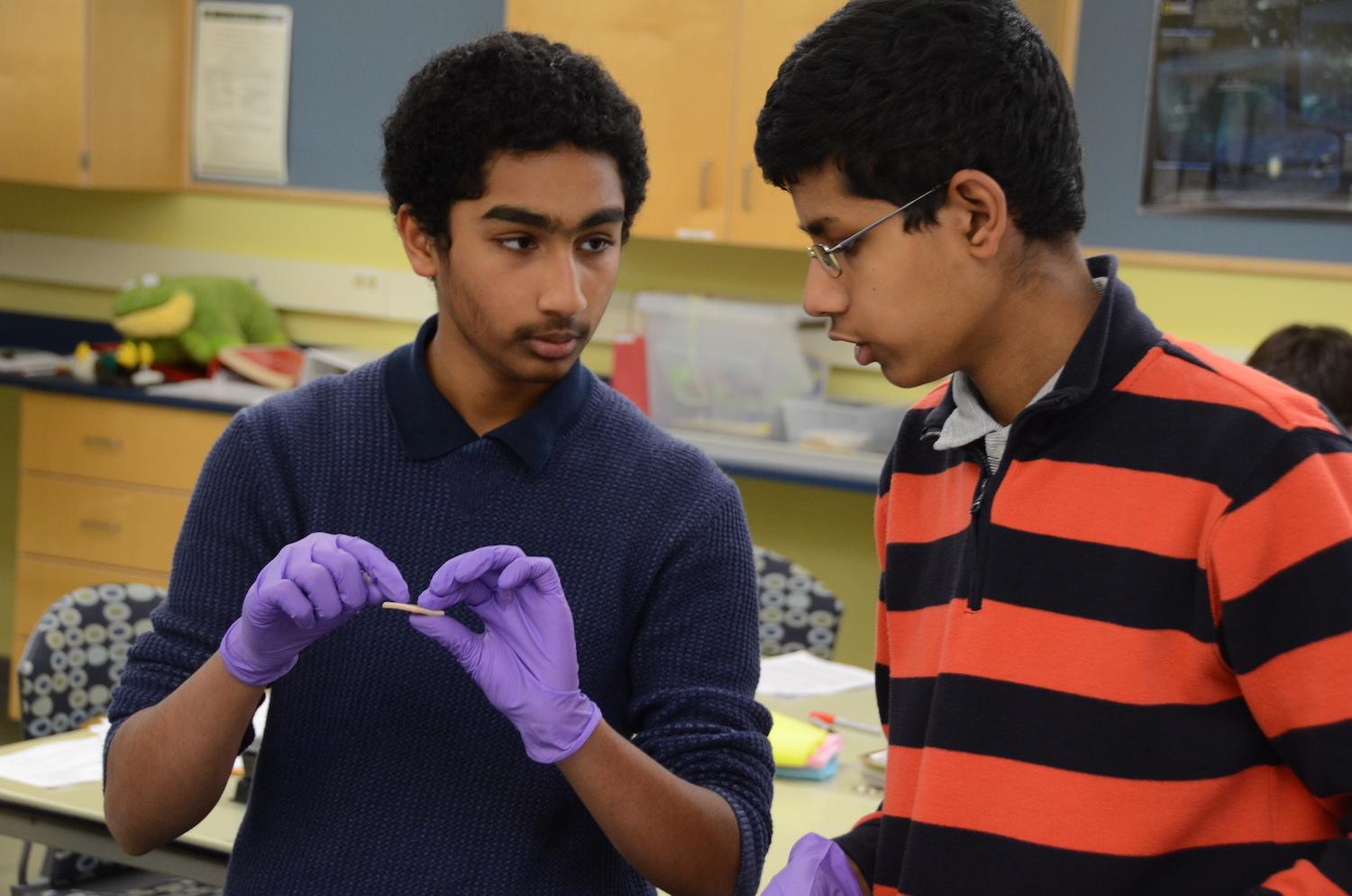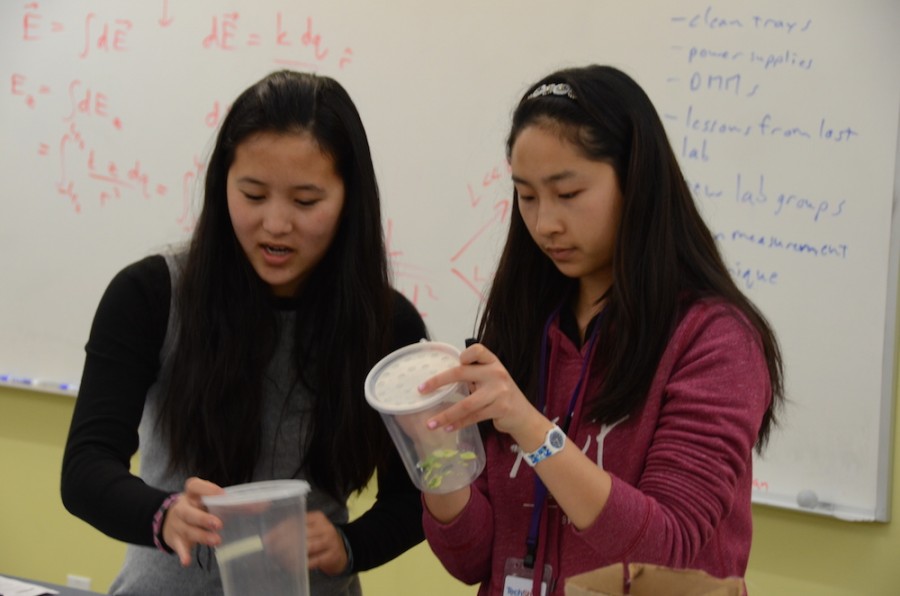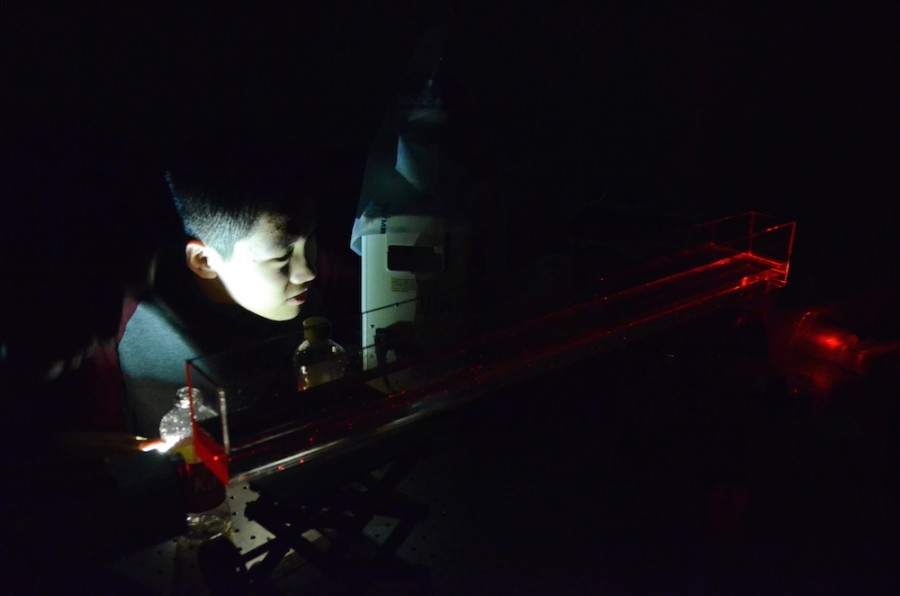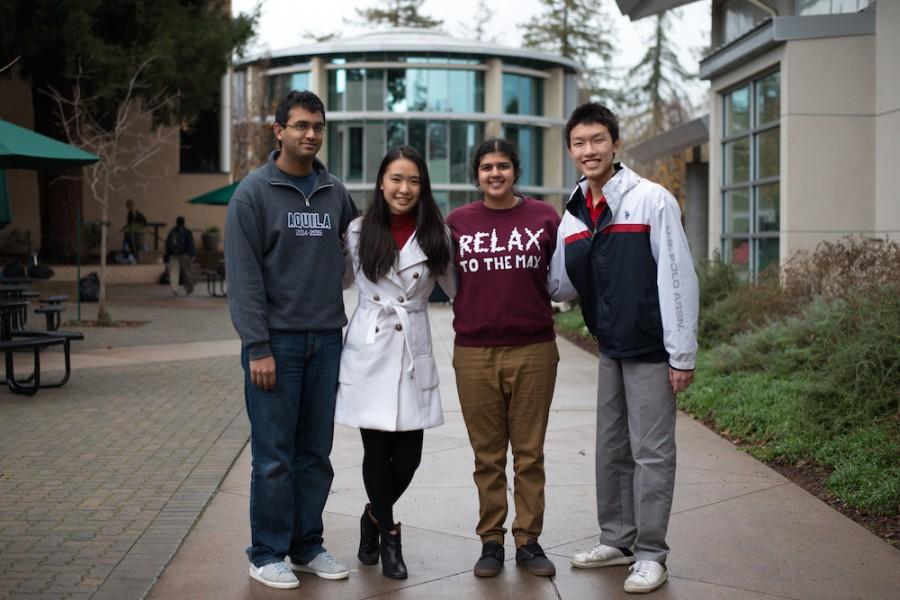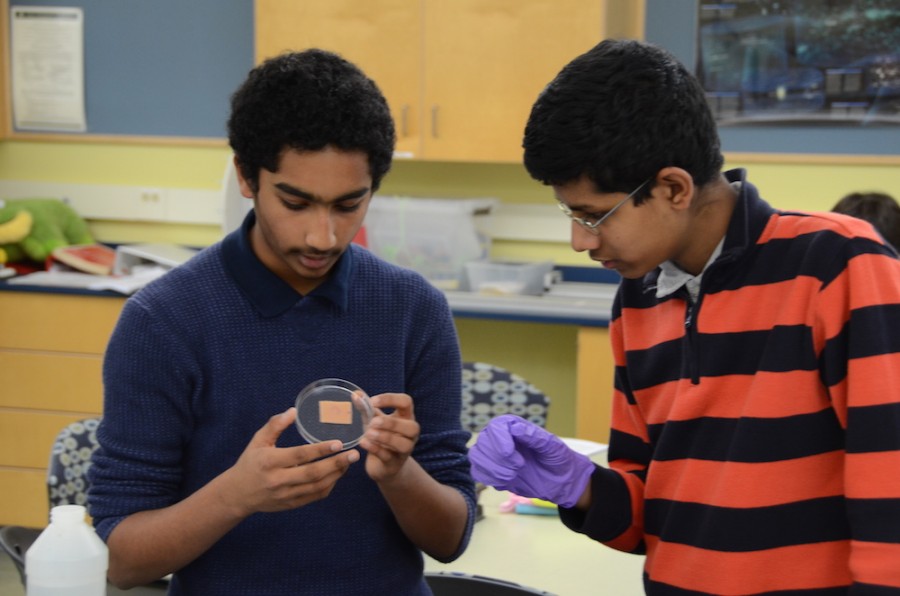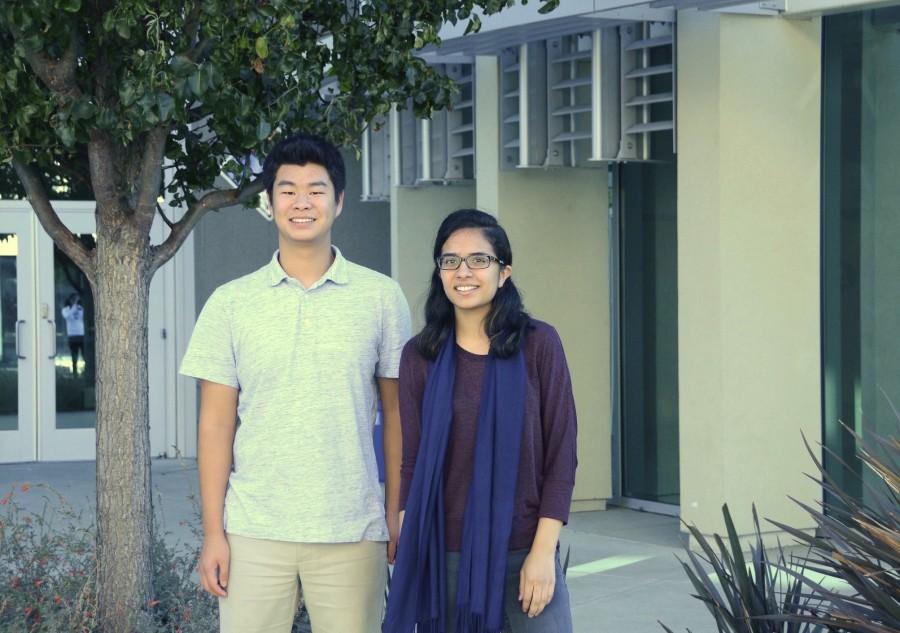Pushing the envelope of research
January 29, 2016
As seniors Alice Wu and Elina Sendonaris enter the room, they turn off the lights, preparing to check the results of their experiment. Once the room is dark, they flick the switch on a red laser and see it bounce, confirming their predictions.
Alice and Elina are participating in extracurricular research, an increasingly popular activity at the Upper School: in a recent survey, 31 percent of students reported participating in research outside the classroom.
This year, students are submitting to four popular research competitions called USAYPT, Intel STS, Synopsys, and Siemens, and are presenting their groundbreaking work in a variety of fields ranging from biochemistry to engineering.
USAYPT
The United States Association for Young Physicists Tournament (USAYPT) is an international contest consisting of four problems that are discussed in a debate style known as “physics fights.”
This year, seniors Elina, Vivek Bharadwaj, Jessica Zhu, and junior Manan Shah will present the team’s solutions for the problems about building falling dominos, creating a vacuum lifter, validifying an electronics property, and bouncing a laser beam.
To solve these problems, team members split them up into several components, tackling each with a combination of computer science, engineering and theoretical and applied physics.
“[After we took pictures of the laser’s bounce], Elina worked with a couple of freshmen to write an image processing program that would convert those pictures into a plot of points and we would run that through Vivek’s program to get the actual result,” Alice said, referring to one of the team’s solutions.
Alice believes that extracurricular research is driven primarily by student interest.
“I think with all research, especially in high school, there is a lot of self motivation,” she said. “If you want to do it, you have to really push yourself and manage your time.”
In the past five years, Harker has placed first in the competition three times and placed second once.
The contest will be held on Jan. 29 and 30 at Randolph College in Virginia.
Intel STS
Senior Johnathan Ma was named one of 40 finalists in the country in the Intel Science Talent Search (Intel STS) on Jan. 20.
Along with Vineet Kosaraju (12), Sophia Luo (12), and Sadhika Malladi (12), Jonathan was named a semifinalist on Jan. 6.
The Society for Science and the Public, which hosts the competition, chose 300 semifinalists out of over 1,750 applicants from 512 schools across the nation.
Jonathan credits much of his success in his project, titled “Genomics-based Cancer Drug Response Prediction through the Adaptive Elastic Net,” to the research experiences that he has gained in previous years.
“When I was in eighth grade, a partner and I did a project on physics on solar panels, and that, although obviously a middle school project, opened my eyes to the world of science research as a whole, and through high school I’ve continued to develop that interest,” he said.
Sadhika has been researching since her freshman year, when she decided to take her computer science skills outside of the classroom. Her project is titled “Application of EMDomics to Identify Age-associated Expression and Treatments in Cancer.” She plans to continue researching in future years.
“I think research is a really continuous process, and a lot of the projects that I’ve been working on haven’t been published yet,” she said. “It’s never something that really ends, so I’m looking forward to continuing it.”
The Intel foundation gives each finalist $1,000 and an additional $1,000 for their school.
Including this year, Harker has had 70 semifinalists and 9 finalists since 2005, three of whom came from last year’s competition.
The finalists will all be flown to Washington D.C. from March 10-16 and winners will be announced on the March 15 in the categories of Global Good, Basic Research and Innovation.
Synopsys Championship
The Synopsys Science & Technology Championship is a science fair held in the Santa Clara County region in March every year, to which upper school and middle school students can submit research via various research programs.
Students work on projects supervised by faculty mentors from a variety of scientific areas, including biological sciences, biomedical engineering, physical sciences and physical engineering, and then present their research in poster form at the fair itself.
Rajiv Movva (10), who has participated in Synopsys since he was in eighth grade, commented on the variety of experiences that he feels the fair offers.
“Synopsys is open to all different groups, and they also have this category specifically for registered research institutions,” Rajiv said. “If you put in time, you can be recognized for it in the same way that professional research would be at a university, so I think Synopsys is good because it provides an introductory stage to get your interest in science research solidified.”
Students will begin setting up for the fair this year on March 16, and the fair will take place on March 17.
Siemens Competition
Juniors David Zhu and Evani Radiya-Dixit were named reigonal finalists in the 2015 Siemens Competition. 11 other students were named semifinalists.
The Siemens Foundation announced 11 semifinalists from Harker for the Siemens Competition in Math, Science and Technology last October, of which two later placed fifth as national finalists in Washington D.C.
Each year, the foundation selects 300 semifinalist projects from around 1400 submissions, of which 60 are selected as regional finalist projects. From those 60, 12 projects are selected to compete in the national competition.
The semifinalists for the 2015 competition are seniors Vivek Bharadwaj, Rishabh Chandra, Anthony Luo and Jonathan Ma, juniors Rishab Gargeya, Shasvat Jawahar, Alexander Mo, Venkat Sankar, Manan Shah, Arjun Subramaniam, Evani Radiya-Dixit and David Zhu, and sophomore Brandon Mo.
Evani and David were selected as regional finalists, and after a 12 minute oral presentation and a 15 minute Q&A session with judges, moved on to the next stage of the competition as regional finalists. At the national stage, Evani and David placed fifth, receiving a $20,000 scholarship from the Siemens Foundation.
David and Evani’s research project was titled “Automated Classification of Benign and Malignant Proliferative Breast Cancer Lesions,” and used a machine-learning algorithm to detect early cancer cells.
“For our project we developed a computer model to discriminate between benign and malignant breast tumors,” Evani said. “So we basically developed a machine-learning algorithm that inputs raw tissue images and then outputs whether the specific sample is benign or malignant.”
David advised students interested in pursuing research to follow their interests and to not be afraid of stepping out of their comfort zone.
“I think the best thing to do is to follow your passion and to take any opportunity that presents itself,” David said. “If you really do what you enjoy doing and you are fine with going a little out of your comfort zone, and you grab that opportunity when it presents itself, I think you are already starting to become a great scientist.”
Meet the researchers
I developed a novel framework integrating machine learning, pathway analysis, and significance analysis, to more accurately predict the response of cancer cell lines to treatment.
Jonathan Ma (12), Intel STS Finalist
I applied big data analyses on microarray gene expression studies of preeclampsia, which is a disease that complicates pregnancies.
Sophia Luo (12), Intel STS Semifinalist
My partner, Evani Radiya-Dixit 11), and I developed a machine learning model that can differentiate between benign and malignant tumors.David Zhu (11), Siemens National Finalist
